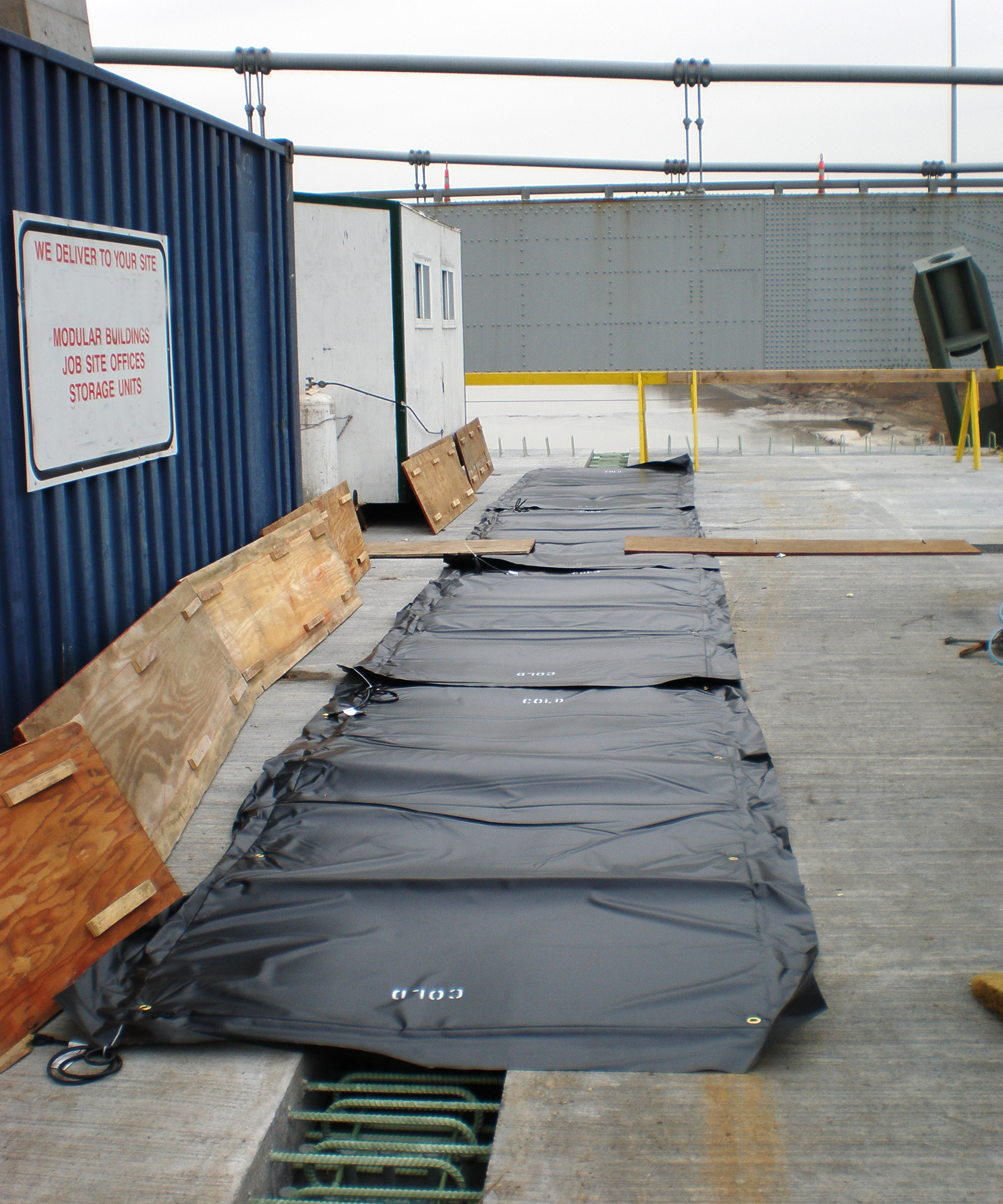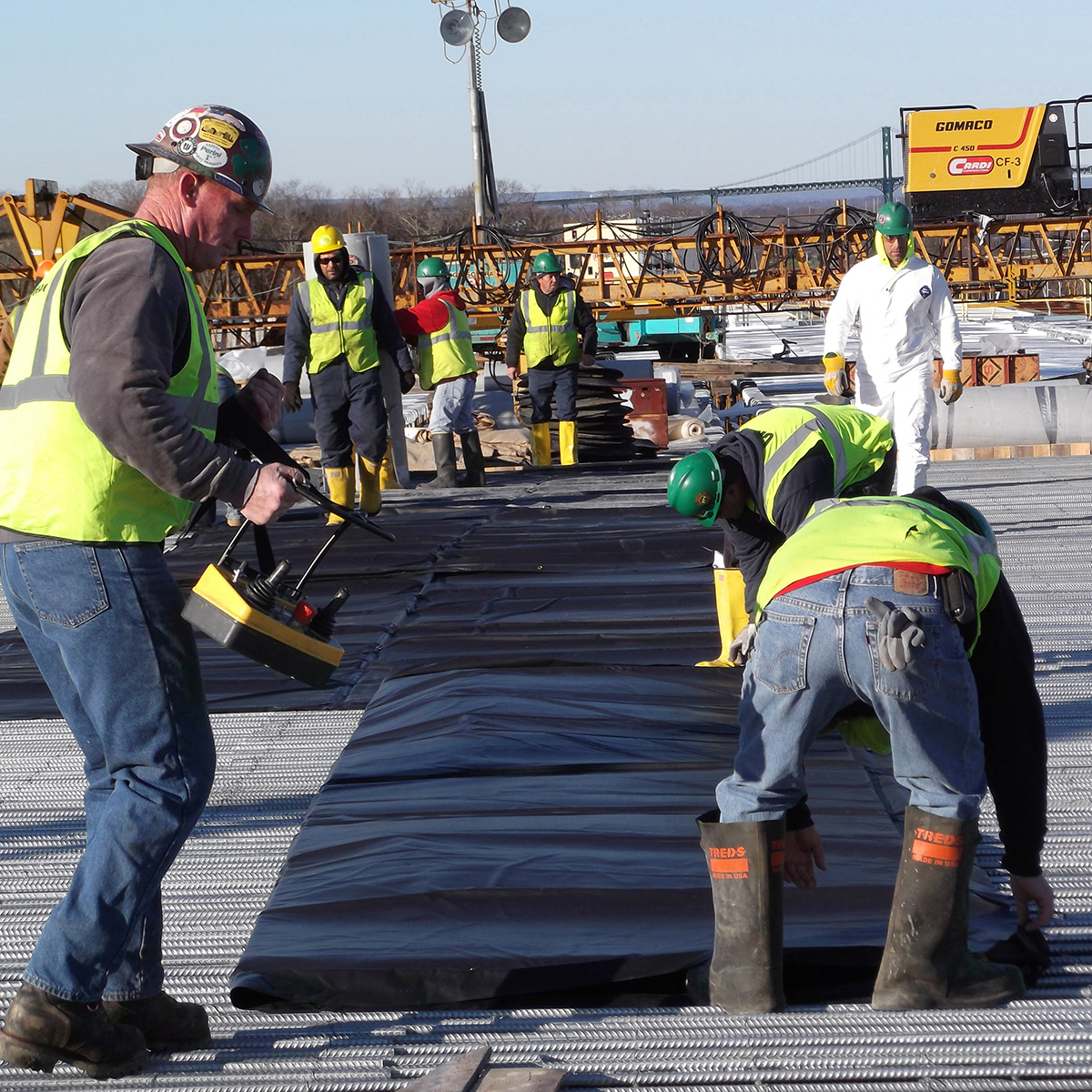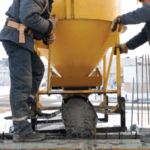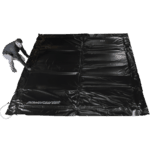
Experts agree that the best temperature to pour concrete is between 50-60 °F. The necessary chemical reactions that set and strengthen concrete slow significantly below 50 °F and are almost non-existent below 40 °F. Even when daytime temperatures are within the satisfactory range, winter concrete setting creates risks that could result in weak, inadequate concrete. If nighttime temperatures are below freezing, the water in the concrete will freeze and expand, causing cracks. Additionally, if temperatures reach below 40 °F (but not freezing) during set time, concrete will take much longer to reach the required strength. However, if the correct measures are taken, concrete can still be successfully placed during even the coldest months of the year.
Protect your concrete pours this winter with a concrete insulation blanket. Our heavy-duty blankets provide the ideal concrete curing environment in cold temperatures.
Things to Consider with Cold Weather Concreting
Before embarking on a cold-weather concrete project, it’s important to determine any special strength requirements or considerations. This will help as you schedule your pouring and determine which strategies you will use to keep your surroundings and materials warm. The predominant challenge you will face during a winter concrete project is ensuring that the concrete sets before it is exposed to freezing temperatures. You might take the following suggestions into consideration as you plan your upcoming project:
- Use heaters to thaw frozen ground, snow or ice.
- Use hot water to mix cement.
- Keep dry materials in a dry, warm location.
- Use products designed to set quickly. During cold weather, these products will not set as quickly as the instructions may indicate but will set faster than conventional materials.
- Use additives that accelerate set time. Use caution; if additives contain calcium chloride, any rebar or metal wire mesh in concrete will rust and cause concrete to crack.
- Use extra cement (typically 100 lb/ cubic yard) to make the reaction hotter and cause concrete to hydrate more rapidly.
- Remember that you still need to wait for bleed water to evaporate. Incorporating the water into the surface during finishing will weaken the surface. Bleeding starts later and takes longer during cold weather; you can use squeegees or a vacuum to remove water quickly.
- Wait until the concrete has reached the desired strength to remove any framework. If the framework is removed too early, the concrete will be damaged and the surface could collapse.
Maintaining Ideal Temperature
After implementing the above suggestions, It’s important to consider how you will keep concrete at the correct temperature during the curing process. Concrete must maintain a temperature above 50 °F for approximately 48 hours for the correct chemical reactions to take place. Two popular options used during cold weather concrete curing are heated enclosures and insulated blankets. If using an enclosure, ensure that the structure is both wind and waterproof. Additionally, ensure that there is proper ventilation for the space heater. Heaters cause an increase in carbon dioxide that could cause carbonation in the surface of the concrete.
Frequently Asked Questions
How cold is too cold for pouring concrete?
Pouring concrete is too cold when temperatures drop below 40 °F, as the necessary chemical reactions slow significantly, risking weak and inadequate concrete.
What’s the lowest temperature you can lay concrete at?
Concrete should not be laid if the air temperature is below 40 °F, and the ground or aggregate must not be frozen to ensure proper setting and strength.
Can you pour concrete if it freezes at night?
Concrete should not be poured if it is expected to freeze within 24 hours, as freezing can cause cracks and compromise the concrete's integrity.
What is the acceptable temperature for concrete?
The acceptable temperature range for concrete placement is typically between 50°F and 90°F, ensuring optimal chemical reactions and strength development.
Cure your concrete faster and better in cold weather conditions with Powerblanket.










